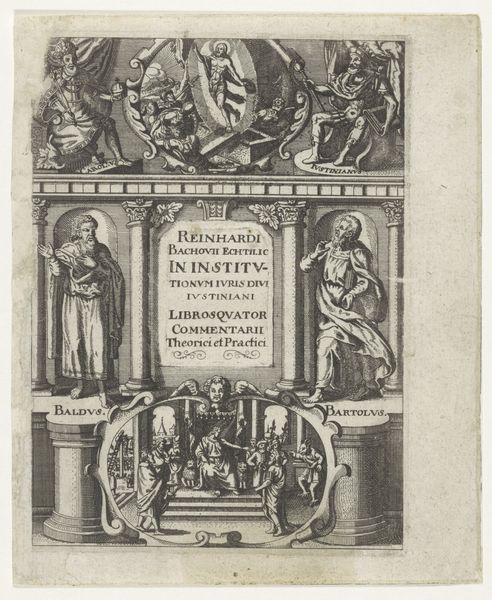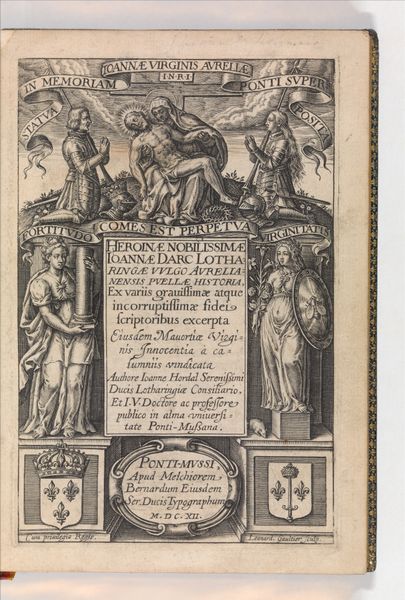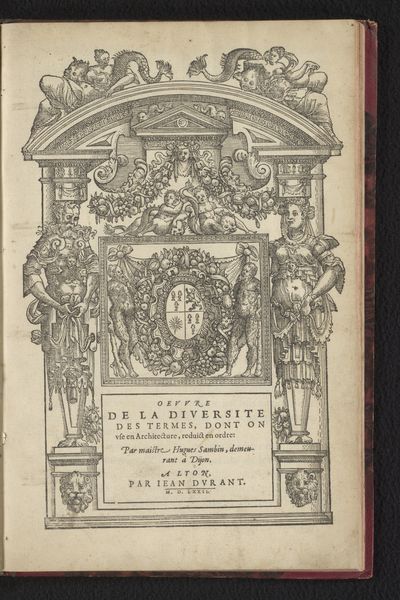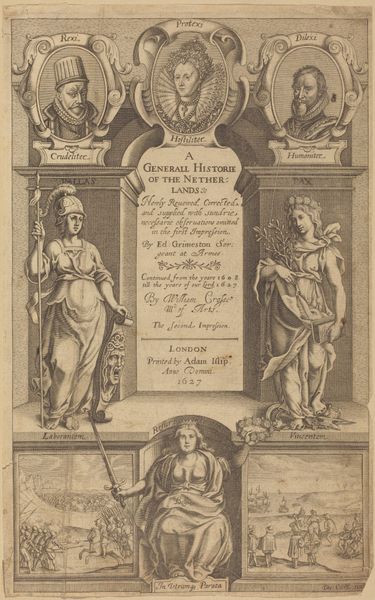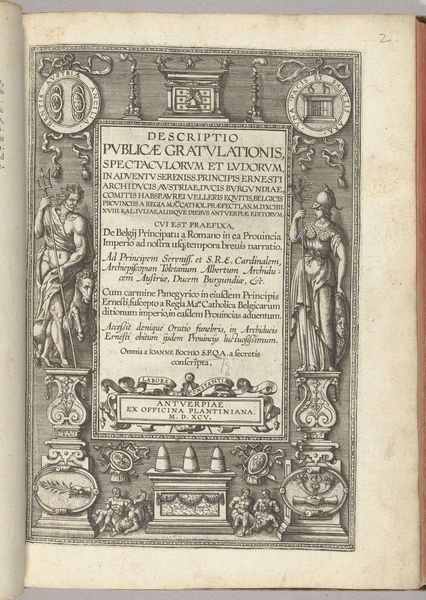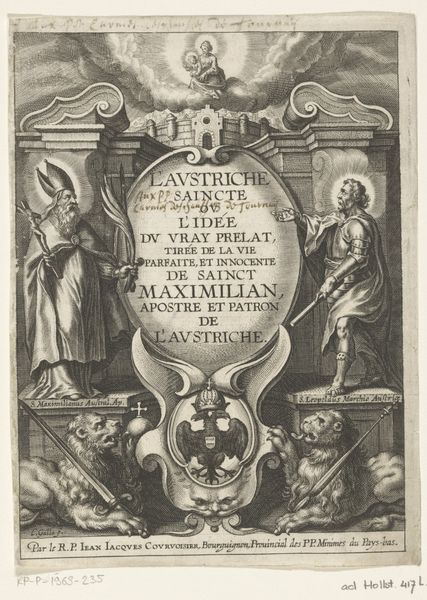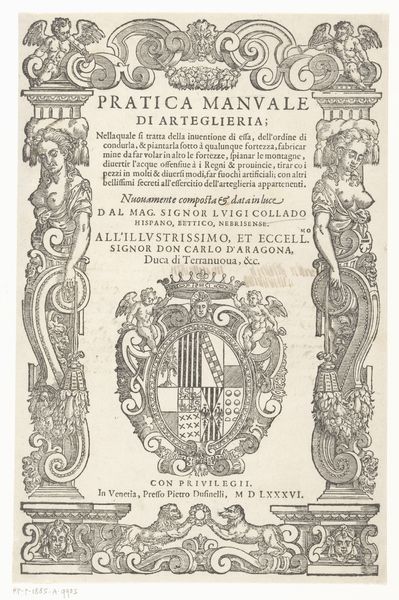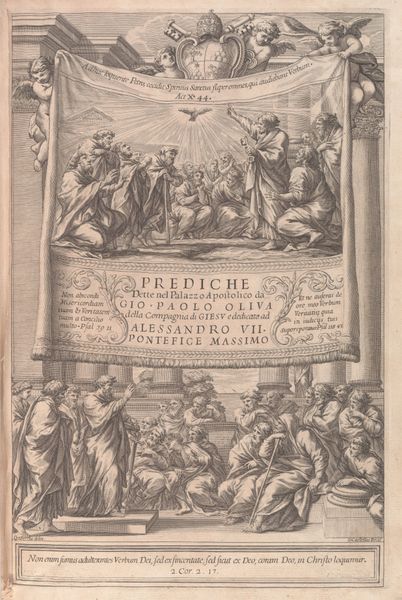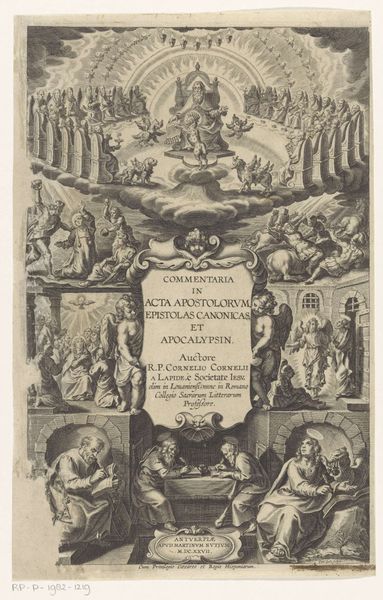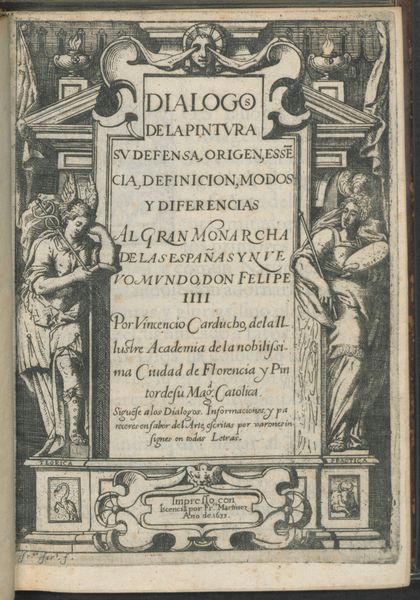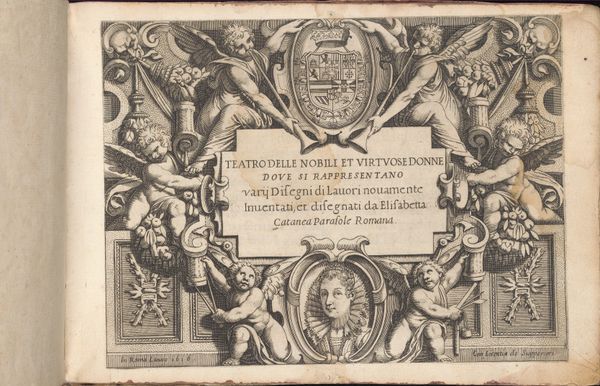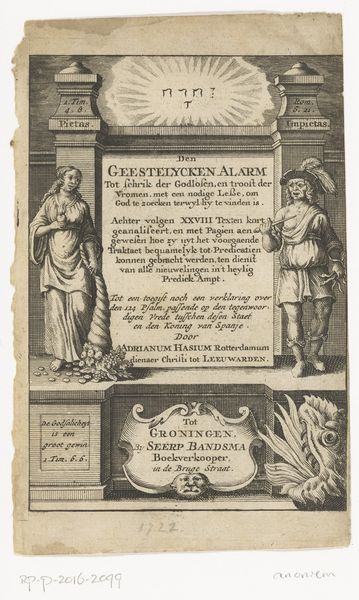
Frontispiece with two figures holding scrolls and cherubs flanking the cartouche at center, from 'The Consecrated Apostolic College' (Il sacrato collegio apostolico) 1606 - 1607
0:00
0:00
drawing, print, engraving
#
drawing
#
baroque
# print
#
figuration
#
line
#
history-painting
#
engraving
Dimensions: Sheet (Trimmed): 20 in. × 14 9/16 in. (50.8 × 37 cm)
Copyright: Public Domain
Editor: This engraving, titled "Frontispiece with two figures holding scrolls and cherubs...", was created by Raffaello Schiaminossi around 1606-1607. It's striking how the detailed line work creates such a dramatic scene. What can you tell me about it? Curator: This print acts as a title page. Its purpose extends beyond mere introduction, functioning to legitimize and promote the content of the volume, particularly its socio-religious context. How do the figures flanking the cartouche, the cherubs above, contribute to its overall impact, given the rise of the Counter-Reformation at the time? Editor: I see that there are classical figures alongside Christian symbolism with the cherubs and cross... Why the mix of styles? Curator: Precisely. The combination is characteristic of the Baroque period, which sought to reconcile classical ideals with Christian themes. This blend enhanced the work's appeal to both elite and religious audiences. Think of the print as not just an image, but a piece of carefully constructed propaganda for a very specific, religiously charged environment. How would such imagery function in shaping public perception, considering the political tensions of the era? Editor: It's almost like a visual argument for religious authority and continuity, using familiar, respected artistic forms to persuade its viewers. Curator: Exactly! And this gets to the heart of the art's historical role, influencing how people understand power, religion, and the institution it represents. Did anything about this artwork shift your initial reaction? Editor: Yes, learning about the social and religious motivations definitely deepened my appreciation for the artist's intent and the work's purpose within the context of the time. Curator: Indeed. Seeing art as a product of its social environment gives us much richer insight.
Comments
No comments
Be the first to comment and join the conversation on the ultimate creative platform.
